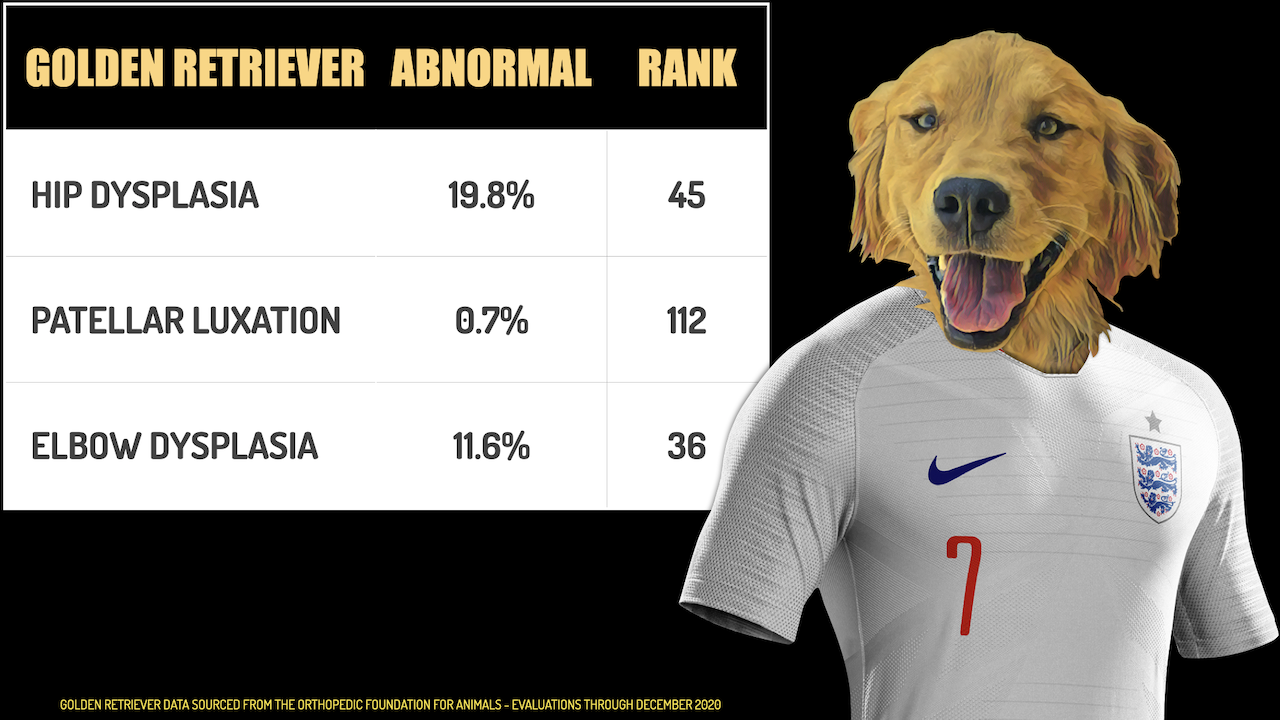DEVELOPMENTAL JOINT DISEASES
NEUTERING AND JOINT DISEASE
A series of studies performed by researchers at the University of California proposed a link between neutering and joint disease. The table below shows their published Golden Retriever data.
SPECIFIC CONDITIONS
-
Chronic forelimb lameness warrants veterinary investigation. Breed risk for elbow dysplasia is 5.5x higher than average. Early diagnosis and prompt treatment can improve long-term prognosis.
Shoulder OCD risk is 13x higher than average but shoulder disorders are significantly less common than elbow dysplasia.
Panosteitis causes waves of pain and lameness, which can switch between limbs. Possible triggers include consumption of protein-rich, high-calorie commercial puppy food. Breed risk in goldies is 1.5x average.
Fragmented sesamoid bones are frequently present without being the cause of lameness. Elbow dysplasia should be ruled out before making a definitive diagnosis.
-
Elbow dysplasia is a common cause of chronic forelimb lameness. Goldies are ranked #3 for elbow arthritis in a UK database. Elbow arthritis secondary to elbow dysplasia gradually worsens with age. The best treatment depends on age and arthritis severity.
Sporting dogs have a higher risk of muscle and ligament injuries. Elbow dysplasia should be ruled out before making a definitive diagnosis. Diagnosis can be challenging, and frequently requires advanced imaging or arthroscopy.
Sesamoid bone fragmentation typically causes intermittent or constant forelimb lameness. Discomfort often worsens during exercise on hard and uneven surfaces.
Golden retrievers are ranked #20 for malignant bone cancer. Average age at diagnosis is 7.1y.
-
Golden Retriever puppies occasionally develop degenerative or traumatic ACL injuries. Tap here to learn more about ACL injury diagnosis and treatment.
Panosteitis causes waves of pain and lameness, which can switch between limbs. Possible triggers include consumption of protein-rich, high-calorie commercial puppy food. Breed risk in goldies is 1.5x average.
Patellar luxation is a sporadic cause of lameness in Golden Retriever puppies.
Significant pain is uncommon with mild or moderate hip dysplasia. Goldies rank #4 for hip replacement in a UK database.
-
Cruciate ligament injuries are the commonest cause of chronic hindlimb lameness. Goldies are ranked #3 in a UK database for TPLO surgery. Tap here to learn more about ACL injury diagnosis and treatment.
Diagnosis of patellar luxation in adult goldies triggers a strong suspicion of concurrent cruciate ligament injury.
Around 1 in 5 goldie x-rays submitted for breeding purposes show hip dysplasia. Significant pain is uncommon with mild or moderate hip dysplasia. Cruciate ligament injuries are a more likely cause of lameness.
Golden retrievers are ranked #20 for malignant bone cancer.




